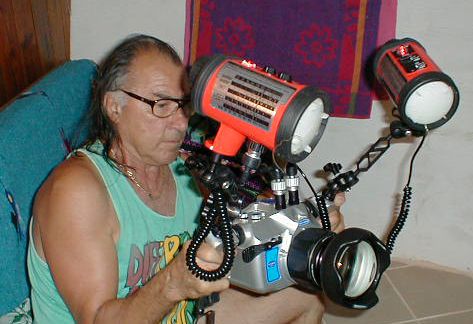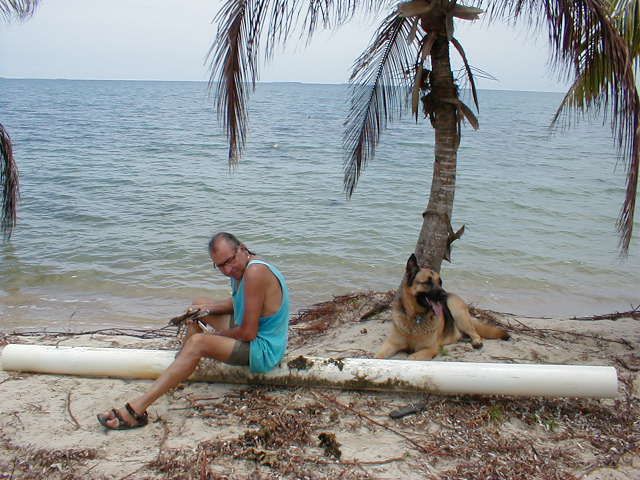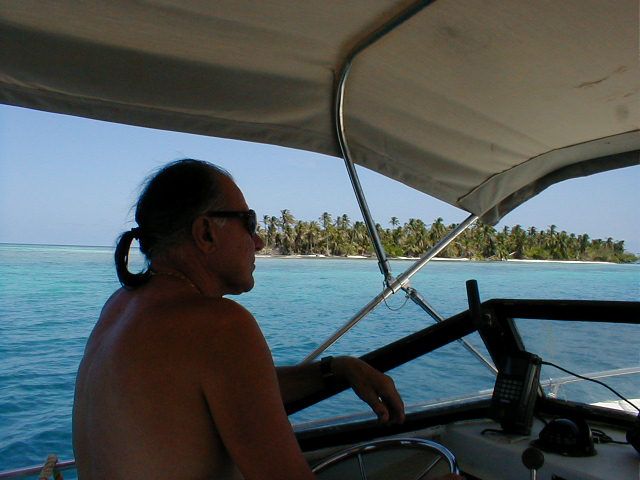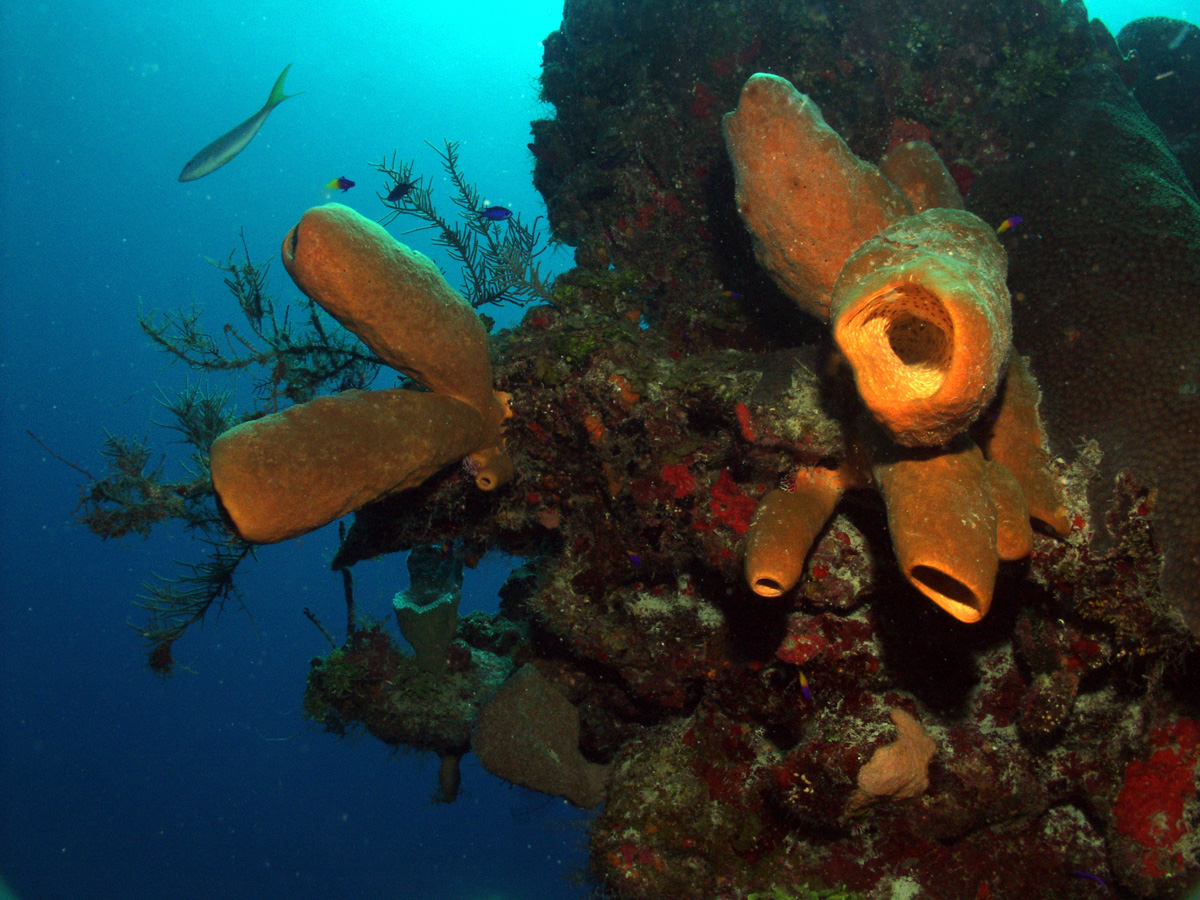Article 1243
The Valiant Bud Valian Story — Mt. Hood’s Ski & SCUBA Diving Living Legend
Early SCUBA Diving recollections of diving in the Pacific Northwest, Mexico & Belize
Written by Tory van Dyke exclusively for the NORTHWEST DIVING HISTORY ASSOCIATION
8-22-22
I have been thinking about interviewing living Ski Legend Bud Valian of Government Camp, Oregon, for many years, about his SCUBA diving adventures south of the border in the Sea of Cortez and way down in southern Belize. Thanks to Lee Englesby, my lifelong friend and Government Camp native, he got me scheduled to do an interview with Bud and his wife Betsy at their beautiful home in Government Camp on Tuesday, August 16, at 12 noon.

Bud preparing his camera for a dive
It was a very wonderful mid-summer day, with clear, blue skies and bright, warm sunshine, as I spent over two hours talking with Bud and Betsy about their many amazing ocean adventures in travel and SCUBA diving.
Bud came from Saskatchewan, Canada, moved to Vancouver, B.C., and then moved down to Portland, Oregon, with his parents in 1953. He settled in Government Camp in 1954, and began teaching skiing with PNSA (PACIFIC NORTHWEST SKI ASSOCIATION), Instructor #62, up at Government Camp at the Ski Bowl. He also bought the first Cousteau U.S. Divers SCUBA Regulator sold in Vancouver, B.C., where he began SCUBA diving in the cold waters of British Columbia, wearing a Bel-Aqua drysuit.
In his early SCUBA diving days, Bud was a customer at Tommy Amerman’s Dive Shop, near his parents’ home in the Ogden neighborhood of southeast Portland, Oregon, starting in 1954. Tommy’s dive shop was located in the front room of his house and in his garage. Bud would take his SCUBA tank to Tom’s for air fills. Tommy gave Bud a quick diving counsel course, where he told Bud to limit his diving to one tank per day and to always ascend slower than his smallest exhaust bubbles. That was it.
Bud equalized pressure in his ears with early and frequent jaw manipulation maneuvers. He never had to use the more aggressive Valsalva method of nose-pinch, puffing air into his nose and creating blow-force back pressure for air equalization to pop his ears.

Bud working on a dock piling
Bud began SCUBA diving south of the border in the spring of 1955 in the Sea of Cortez. He would head south in the spring for two months after ski season and before returning to his seasonal road construction job. He ran heavy equipment in the Local #701 Heavy Equipment Operators Union, running Bulldozers and Scrapers. He did some timber falling at the coast near Otis but got a back injury in a tree falling accident. He drove truck hauling rock and gravel near Estacada, but too many dusty roads, zero visibility and deadly collision close calls with log trucks took him into the heavy equipment operators’ Union.
On his first trip down to Mexico in his VW micro-bus camper, he quickly learned that no SCUBA air fill compressors or SCUBA diving equipment existed around the Sea of Cortez on the mainland coast. He returned to Portland and built a portable air compressor system, using a war surplus B-29 landing gear high-pressure air compressor that he acquired from the original North Portland G.I. Joe’s Army-Navy Surplus Store. He used electrical conduit steel tubing, a three H.P. Briggs & Stratton lawn mower engine, some pullies and a belt drive, and fashioned a high-pressure steel canister filter, utilizing Kotex cotton absorbents and granulated Charcoal. The filler hose whip and tank valve yoke he bought from Tommy Amerman.
With his portable SCUBA air compressor system loaded on board, he returned once again in his VW camper to the Sea of Cortez and began SCUBA diving. He befriended a local Mexican free-diver named Setante and taught him how to SCUBA dive. Setante had a 28-foot-long, canoe-style boat, and the two of them began sailing down the coast line, SCUBA diving and trading speared fish for vegetables from the locals. This was truly virgin SCUBA diving in the Sea of Cortez. The Sea was teeming with marine life in unimaginable quantities. Bud described the Sea of Cortez as one huge, fish catch basin.
Bud returned almost every year for two months in the spring time to dive with Setante and explore the Sea of Cortez, SCUBA diving in the virgin waters. After the shivering winter snow seasons, shoveling snow and teaching skiing, he was always ready to head south to warm up and thaw out in the warm, clear Sea of Cortez waters, under the bright and clear atmosphere of Mexican sunshine.
Bud Valian was an easy breather on air consumption underwater. He also over-charged his SCUBA tanks for optimum underwater time. Many times, he would finish his dives with 2500psi remaining in his tank, while his companion divers’ tanks were empty. Bud said he would charge his tanks to 3200psi, when they were only rated for 2250psi. That may account for the fact that he had 2500psi air pressure remaining after his dives. Nevertheless, his buddy divers had blown through their 2250psi filled tanks, so Bud only used about a third of the air that his buddies did.
In the summer of 1959, Bud joined Government Camp local Bob Finn and Frenchman Bernard Palmachowship at the Alyeska Ski Resort, near Anchorage, to construct Alaska’s first Ski Chair Lift.

—
“Alyeska Resort is a ski resort in the Girdwood area of Anchorage, Alaska, approximately 30 miles (44 km) from downtown Anchorage. Mount Alyeska is part of the Chugach mountain range and the Alyeska Resort is the largest ski area in the state. The Alyeska Ski Corporation was founded in 1954, and the first chairlift and day lodge were opened in 1959. The Roundhouse ski lodge and ski patrol station at the top of the mountain began construction in 1960. It is an octagonal building. Still standing, it was listed on the National Register of Historic Places as “Mt. Alyeska Roundhouse” in 2003, and now houses a museum to local ski history.” — https://en.wikipedia.org/wiki/Alyeska_Resort
—
Bud worked as a ski instructor and later opened the Mogul Mouse Ski Shop and Bud Valian’s Ski Shop in Government Camp, Oregon, teaching skiing all winter. He would travel south for two months every spring for SCUBA diving adventure, and then return to road building, operating heavy equipment with local Union #701 during the dry summer months, before returning to the mountain for yet another winter ski and snow shoveling season.
Bud made some SCUBA snag dives for the gillnet fishermen on the old Fishers’ Drift, located upstream at Gentry’s Landing on the mighty Columbia River east of Vancouver. The river drift flows under the now existing Interstate 205 Glenn Jackson Bridge, connecting Portland, Oregon, and Vancouver, Washington. He recollected that he made his snag dives in the early sixties.
Tommy Amerman, Paul Mark, Bud Sanders and many other divers earned money from the gillnet fishermen on the Columbia River through the years snag diving, engaging in what amounts to underwater logging. It was very challenging diving, and only the most agile and experienced, strong divers have been successful at it. Cold, fast water, limited underwater visibility, and fouled snag nets entangled in underwater stumps, logs and other debris made the activity not one for the faint-hearted.
I made a portion of my humble livelihood snag diving on the river for almost four decades, from Bonneville to Astoria and in the Young’s Bay salmon hatchery terminal fishery. It’s rough and tough. When the tide stopped and your dive shift was over, you felt completely bullet-proof and very satisfied with your super dangerous job well done!
Bud made some very deep SCUBA dives in the Sea of Cortez, and later down in Belize. He said he made his deepest dive to 328 feet, marked by his depth gauge indicator, in the Sea of Cortez one time, and it was so deep that it started getting dark! Bud said, “It was pretty dark actually!”
Bud met his wife Betsy down on the coast in 1980. Betsy had her Coast Guard Master Mariner’s license, and she was operating an Oceanographic Research vessel with the Hatfield Marine Research Center in Newport. Bud was fishing his salmon trawler out of Depot Bay and the two became acquainted. Betsy said the coast is a small place.
They got married and Bud taught Betsy how to SCUBA dive. Betsy said that Bud “counseled many friends” in the techniques of SCUBA diving. Betsy took a vacation resort SCUBA course on a trip to the Bahamas. She didn’t want to be left behind waiting on the dock while Bud went out diving.
In 1981, they began their first overland trek travel down to Belize through Old Mexico, which they continued to do for twenty years.
The annual overland pilgrimage adventure trips to the newly independent Belize, liberated from British Honduras, were always challenging and sometimes downright dangerous. They traveled overland to Belize from 1981 until 2001, using Bud’s customized Dodge Ram diesel pickup truck. With their two large German Shepherd dogs loaded in the back, and all the provisions they needed to survive, they began their treacherous journeys.
They had many very challenging and exciting overland adventures through the entire length of Mexico to get to Belize. Federales, banditos, massive road washouts, countless challenges through the countryside, trying routes on both coasts, through the middle central desert alongside the mountains, and finally into the rugged roads of the Belize countryside, complete with Mayan Ruins, massive jungle, and limited asphalt roads.
The overland trip from Government Camp to Belize in Bud’s pickup with canopy took from 8 to 22 days, depending upon weather conditions and truck mechanical stability. Night travel was entirely avoided and verboten south of the border, due to the conditions of no electricity and total darkness. Things that go bump in the night on the roadways down in Old Mexico, usually present some very unpleasant images at twilight the next day.
It is a common practice for thieves, gangs and highwaymen to position a gang member as bait, lying alongside the roadway, to trick unwary travelers into stopping. The looter gang remains hidden out of sight in the ditch beside the roadway, ready to pounce upon the Good Samaritan, duped into rendering assistance. Many an unsuspecting traveler has been trapped and abused by the ruthless, lawless Mexican drug cartels and looters who prey upon their naivete. Get smart quick down Old Mexico way or get dead. Savvy?
On one of their earlier treks to Belize, Bud came across a routine like that described above. Betsy called for him to stop and render assistance to the man lying beside the road. Bud picked up speed and zoomed very close beside the body as they flew past in their large truck. Looking back into a cloud of dust, Betsy saw the man fly off the roadside and down into the ditch at lightning speed to escape from his near-death experience, where he fell into the arms of his awaiting gang associates. Betsy quickly learned one of the many savvy survival tips necessary to preserve yourself when traveling south of the border. Lawlessness and corruption brought about by poverty and starvation in an arid land paint a bleak and ugly picture of human misery.
Bud and Betsy fell in love with southern Belize and the village of Placentia, in the Stan Creek District next to the Caribbean Sea. They bought some waterfront property, built two homes on it, and had a dive boat built in Belize City they named the Calypso. They began spending two months every spring SCUBA diving the Caribbean in the pristine, virgin waters off the coastline of Southern Belize, on the world’s second largest barrier reef. Eventually, steady electrical power, air conditioning, fresh running water, septic systems, 5-G cellphone towers and internet service, and an influx of wealthy celebrity neighbors and rich people, including many American ex-patriots, settled in around them.
Today, the area is well civilized. The property tax has elevated from $60 to $104 USD per year, and groceries are readily available in Placentia, no longer necessitating the three-hour long trip to Belize City for provisions. Bud even remarked that they had 5G cellphone and internet service a full two years before it was available in Government Camp, Oregon.
Bud and Betsy now fly from Oregon down to Belize City, taking a puddle jumper aircraft to Placentia. They enjoy life in their tropical Caribbean paradise, with their dive boat Calypso and two homes. They even have a fulltime caretaker living on the main floor of one of their homes. With all the modern conveniences of civilization, unlimited SCUBA diving adventures from the deck of their dive boat Calypso, and living next to the world’s second largest barrier reef, what’s not to love?
—
The Blue Marlin Lodge
https://www.bluemarlinbeachresort.com/ A Belize Private Island Resort
“Hosting an exclusive number of guests at a time for over 30 years, Blue Marlin Beach Resort is an iconic off-the-beaten-path island resort with a focus on authentic and personalized Belizean hospitality. Blue Marlin is a locally-owned, family business with a cozy, private, and comfortable historic charm. Discover nature and adventure like no other here in a pristine outdoor setting directly atop the Belize Barrier Reef. Discover your own little corner of paradise here on South Water Caye, 14 miles (23 km) off the mainland coast of Belize.”
—
On another occasion, Bud made a very deep dive to 300 feet in southern Belize, off the barrier reef vertical wall near his home. He called that deep dive his S.M.T. dive, meaning STUPID MACHO THING! Bud told me about his S.M.T. dive more than seven years ago, when I had stopped by his Ski Shop in Government Camp. I realized then that I had to get more information from him about his many adventures SCUBA diving south of the border.

Bud and Betsy went to Nassau, Bahamas, on a vacation visit in 1981. Bud made arrangements and went out boat diving right away. Betsy was left standing on the boat dock. She immediately enrolled in a five-day long SCUBA training resort course, where she learned openwater SCUBA. She even made a forty-foot free swimming ascent after ditching all her gear on the ocean bottom. Betsy hummed her way to the surface and reaching the air again, she took a huge breath. Her training helped her to stay calm in Timothy Lake and extricate herself from the tree branch entanglement experience in black water.
Later, Jim Larson, SCUBA diving instructor and owner of the Dolphin Too Dive Shop in Vancouver, Washington, awarded her with a N.A.U.I. Openwater SCUBA Diver certification card. He said that she needed that card to keep up with Bud and all his diving exploits south of the border. Jim said that Bud and Betsy would come into the shop for air fills and gear, and they would share many dive stories of their adventures in the Caribbean Sea.
Concerning that Mt. Hood dive, Betsy told Bud she wanted to dive in Timothy Lake. Bud tried to talk her out of it because the water in that lake is deep, cold and dark. Betsy still wanted to make the dive. So, Bud got her gear together and they went to the lake. Betsy made it to 110 feet deep. It was pitch black, very cold, and she got herself snagged on the branch of a sunken tree, which she managed to carefully back track out of and remove herself safely from it. When she returned to the surface, she had to admit to Bud that he was right. Her cold lake diving up on the mountain was over and done. Belize presented her with much better SCUBA diving opportunities.
Vertical wall diving in the tropics makes it easy to get deep quick. In the super clear and warm Caribbean Sea near the coast of southern Belize, it is easy to drop down to extreme depths, over 200 feet, very rapidly to take a quick look around before returning to the surface.
Bud said that his technique for ascent from an extreme deep dive was to slowly exhale almost continuously while gently returning to the surface. This was his way of out gassing the tremendous nitrogen gas accumulation from his body tissues pressurized into solution form.
Betsy remarked that she had to abort some deeper dives with Bud due to Nitrogen Narcosis. Her symptoms included numbness around her mouth, with difficulty keeping her regulator in proper position for breathing. She would ascend to shallower water and wait for Bud to return. She said a feeling of malaise and a general uneasiness would come over her, and that was enough cause for her to ascend to the shallower depths. Bud appeared to remain impervious to any adverse effects of Nitrogen Narcosis. That is the standing prerogative of the Living Legend, Valiant Bud Valian of Government Camp, Oregon!
With Bud’s many decades of deep SCUBA diving experience, he said that Nitrogen Narcosis must be overcome by gradually increasing deep dive exposure depths. Divers will slowly adjust and adapt to increased dive depths. The sensations produced by Nitrogen Narcosis affect a diver’s judgment, mental concentration and physical coordination. Each diver’s experience is unique and individualized, making it very similar to alcohol intoxication. While immunity to deep SCUBA air breathing narcosis doesn’t exist, tolerance of individual symptoms may effectively be developed with gradual depth increase exposure familiarity. The more deep dives you make, the easier it will be to deal with the symptoms of Nitrogen Narcosis. In SCUBA diving, there is no substitute for open water experience. ADAPT, IMPROVISE, INNOVATE & OVERCOME!
He said that he had suffered from ‘PAIN ONLY’ decompression sickness symptoms numerous times. He experienced pain in his shoulders and pain in his lower back. Bud thought this was not unusual for a diver who had made many dives over a lifetime. He never sought any recompression treatment. The reality of most of Bud’s diving adventures meant that there were no recompression chambers available for the treatment of decompression sickness within a thousand miles of most of his dive site locations.
Tommy Amerman was a professional SCUBA diver who made many very deep and long working dives, and he had suffered numerous bouts with severe decompression sickness. Bonneville Dam had a recompression chamber treatment facility, which Tommy was known to frequent after his double-shift dives on the John Day Dam construction project, working with Paul Mark and Bud Sanders.
Bud Valian worked for the company that supplied all the rock and gravel supplies for the entire John Day Dam construction project from 1958 through 1960. Tommy, Paul and Bud did all the diving on the John Day Dam construction project using SCUBA equipment.
Bud and Betsy are preparing to sell their Government Camp, Mt. Hood Oregon home and move back to Betsy’s original childhood homeland area near Newport on the Oregon Coast, to retire near the magnificent Big Blue Pacific Ocean. No more snow shoveling all winter long, and Bud has officially retired from skiing and ski instruction. Bud and Betsy have very deep ocean ties that course freely through their veins. Fresh ocean air is refreshing, invigorating and rejuvenating.
Bon Voyage and Best Wishes to Bud and Betsy Valian on their well-earned retirement days on the seacoasts. Many thanks for your time to get the great interview with you both. I’ve known Bud all my life, and now I know some of his many lifetime diving adventures in the undersea world. Thank you very much, Bud and Betsy!
Your Friend,
Tory van Dyke
—
The Coral Divers of Corsica, Episode 32 of 37, Jacques Cousteau Odyssey. The real-Life Aquatic Adventure
https://www.youtube.com/watch?v=0g9JQIWw6_I
This episode features super-charged, pressurized air tanks and deep, working diving on SCUBA over 300 feet, just like Valiant Bud Valian has experienced on many exciting deep dives. Circa 1971.
—
John Denver – “Calypso” (1975) – Music Video
https://www.youtube.com/watch?v=D2qf1nKhub4
“The sea, once it casts its spell, holds one in its net of wonder forever.” – Jacques Cousteau
“CALYPSO” is the name of Bud and Betsy’s dive boat they had built in Belize City.
—
Seashores of Old Mexico by Merle Haggard & Willie Nelson
https://www.youtube.com/watch?v=3r8Bc1Zs06M
This song, while not exactly like Bud’s early adventures in Old Mexico, has an interesting correlation with Bud’s diving vacations and life living in his VW microbus camper, SCUBA diving in the virgin waters of the Sea of Cortez for twenty years.
—
I want to sincerely thank Bud and Betsy Valian for spending two and a half hours of their precious time with me on August 16, 2022, giving me answers to the many questions I had concerning their adventurous lives and the many aspects of their long diving journeys and overland excursions south of the border on the seashores of Old Mexico and the beautiful shores of southern Belize. I also want to thank my good friend and fellow Government Camp native Lee Englesby, for making the interview scheduling arrangements with Betsy Valian to make this article possible.
Written by Tory van Dyke exclusively for the NORTHWEST DIVING HISTORY ASSOCIATION,www.divinghistory.org
© 2022 All rights reserved
